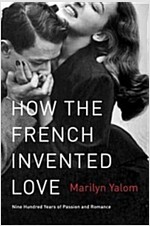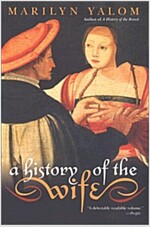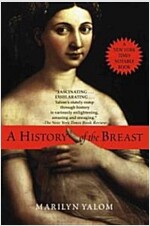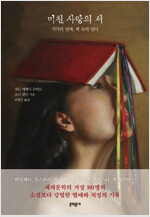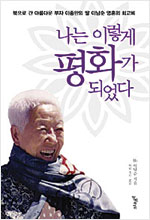The Tao of Health, Sex, and Longevity: A Modern Practical Guide to the Ancient Way Paperback – July 15, 1989
by Daniel Reid (Author)
4.6 out of 5 stars 451 ratings
406 pages
With a detailed introduction to the ancient philosophical, ethical, and religious Chinese practice of Taoism, The Tao of Health, Sex, and Longevity is a unique, comprehensive, and practical self-help guide to live a balanced and positive Taoist lifestyle.
Written by a Westerner for the Western mind, The Tao of Health, Sex, and Longevity is perfect for the modern reader interested in exploring the balanced and holistic health care system used by Chinese physicians, martial artists, and meditators for over 5,000 years.
Drawing on his extensive personal experience and research from original sources, author Daniel Reid covers all aspects of the healthy Taoist lifestyle, delivering concise information and instruction on diet and nutrition, fasting, breathing and exercise, sexual health, medicine, and meditation.
Featuring helpful charts and illustrations, The Tao of Health, Sex and Longevity makes the ancient practice easier to understand and more applicable to a modern Western audience than ever before.
===============
Editorial Reviews
About the Author
Daniel Reid was born and educated in America and lived in Taiwan, where he studied under numerous Tao masters. He is a Taoist practitioner and the author of several books, including the bestselling The Tao of Health, Sex, and Longevity; Guarding the Three Treasures; Chi-Gung; and Chinese Healing Herbs. He lives in Thailand.
Excerpt. © Reprinted by permission. All rights reserved.
====
Chapter 1
Diet and Nutrition
Food and drink are relied upon to nurture life. But if one does not know that the natures of substances may be opposed to each other, and one consumes them altogether indiscriminately, the vital organs will be thrown out of harmony and disastrous consequences will soon arise. Therefore, those who wish to nurture their lives must carefully avoid doing such damage to themselves.
[Chia Ming, Essential Knowledge for Eating and Drinking, 1368]
One of the great advantages of learning Tao is that the same basic principles apply to everything from the macrocosmic to the microscopic. In the case of diet, the overriding Taoist principle of balance between Yin and Yang is established by harmonizing the Four Energies and Five Flavors in foods.
The Four Energies in food are hot, warm, cool and cold. These categories define the nature and the intensity of energy released in the human system when food is digested. Hot and warm foods belong to Yang; cool and cold foods belong to Yin. The former are stimulating and generate heat, while the latter are calming and cool the organs.
The Five Flavors are more subtle distinctions based on the Five Elemental Activities: sweet (earth), bitter (fire), sour (wood), pungent (metal) and salty (water). Each of the Five Flavors has a 'natural affinity' (gui-jing) for one of the five 'solid' Yin organs and its Yang counterpart: sweet influences pancreas/stomach; bitter moves to the heart/small intestine; sour has affinity for the liver/gallbladder; pungent affects the lungs/large intestine; and salty associates with the kidneys/bladder.
The therapeutic effects of the Four Energies and Five Flavors are as follows:
* Cool and cold Yin foods calm the vital organs and are recommended for summer menus, as well as for combating 'hot' Yang diseases such as fever and hypertension. Yin foods include soy beans, bamboo shoots, watermelon, white turnips, cabbage, pears, squash and lemons.
* Warm and hot Yang foods stimulate the vital organs, generate body heat and are recommended for winter consumption, as well as palliatives for 'cold' Yin diseases such as anemia, chills and fatigue. Yang foods include beef, mutton, chicken, alcohol, mango and chilies.
* Sweet 'earth' foods disperse stagnant energy, promote circulation, nourish vital energy and harmonize the stomach. Corn, peas, dates, ginseng and licorice are examples of sweet foods.
* Bitter 'fire' foods such as rhubarb and bitter melon tend to dry the system, balance excess dampness, and purge the bowels.
* Sour 'wood' foods such as olives and pomegranate are astringent, tend to solidify the contents of the digestive tract, stop diarrhea and remedy prolapse of the colon.
* Salty 'water' foods such as kelp soften and moisten tissues and facilitate bowel movements.
* Pungent 'metal' goods such as ginger, garlic and chili neutralize and disperse accumulated toxins in the body.
Taoists balance their diets according to favorable combinations of energies and flavors and strictly avoid combinations that conflict. They also avoid excessive consumption of any single variety of food-energy. For example, frequent excessive consumption of 'hot' fatty Yang foods can cause fevers, heartburn, congestion, chest stagnation and other unpleasant effects of 'heat-energy excess'. As this excess 'evil heat' seeks escape from the body, carbuncles and absesses may develop. Too much pungent food can cause gastro-intestinal distress, upset the stomach and result in hemorrhoids. Even the freshest, most wholesome foods are rendered nutritionally useless if consumed in combinations that interfere with digestion, cause putrefaction and fermentation, block assimilation and cause internal energy conflicts.
Mother Nature's Menu
When formulating personal dietary guidelines, it is helpful first to determine your own basic metabolic type, of which there are three: vegetarian, carnivore and balanced. The vegetarian and carnivorous types each represent about 25 per cent of the general population, with the remaining 50 per cent falling into the balanced category. These human metabolic types stem from the prehistoric switch by some segments of the human species from a fruit and nut based diet to a meat diet.
Vegetarian metabolisms are 'slow oxidizers', which means that they burn sugars and carbohydrates slowly. Because the body must burn sugar in order to provide sufficient energy to digest meat and fat, slow oxidizers have trouble burning sugar fast enough to efficiently digest large quantities of meat, eggs, fish and other concentrated animal proteins. Consequently, large doses of protein foods tend to make vegetarian types feel tired and sluggish after meals. An easy test for metabolic type is to eat a large steak or a whole chicken and see how you feel afterward. If it leaves you feeling 'wiped out', mentally depressed and lethargic, then you probably tend towards a slow-oxidizing vegetarian metabolism, in which case you should restrict protein and fat consumption and favor vegetables, fruits and carbohydrates in your diet. If a large intake of concentrated animal protein leaves you feeling strong, vital and mentally alert, then you probably lean towards a fast-oxidizing carnivorous metabolism.
Since carnivorous metabolisms burn sugar and carbohydrates very rapidly, excess consumption of sugar or starch tends to make them excessively nervous and agitated due to overstimulation of the nervous system. Fast oxidizers derive energy by digesting large quantities of animal fats and proteins, which are sent to the liver for conversion into glycogen. The liver then dispenses the glycogen into the bloodstream in the form of glucose -- the only form of fuel the body can burn -- in gradual measured doses, as needed. That's why fast oxidizers require a steady supply of protein and fat in their diets and should restrict intake of sugars and starches.
Fortunately, most of us have balanced metabolisms that can handle both varieties of food when properly combined. Although our digestive tracts were originally designed by nature for a diet of fruit and vegetables, our digestive systems have evolved the capacity to produce the gastric juices required to digest the meat that became part of the human diet 50,000-100,000 years ago. If large quantities of animal protein don't leave you feeling depleted, and if large doses of sugar and starch don't make you nervous, then you are probably a balanced metabolizer who needs only worry about selecting wholesome foods from both categories and combining them properly for consumption. In the Tao of diet, however, these are just the first steps in regulating diet. Season and climate, for example, must also be considered in order to ensure that the extreme external cold winter is balanced by the extra internal heat of Yang-foods, hot summer weather is complemented by cooling Yin-foods, dry climates are compensated with extra moisturizing foods, and so forth. Foods consumed out of harmony with season and climate can cause all sorts of problems, including skin eruptions, constipation, gas, fatigue and bad breath.
Taoists tend to favor local produce because it is far more likely to be fresh and brimming with the vitality of its own chee. Today, the modern food-processing industry, in conjunction with high-speed transport, has made it possible to eat Florida oranges in Alaska, frozen prawns in the middle of the desert and all sorts of processed packaged 'junk food' any time of day or night, anywhere on earth. As a result, modern diets are completely out of synchrony with the natural prevailing conditions of geography, season and unseen cosmic forces.
Taoists also make a point of eating foods with natural affinities for their weakest organs and related energy systems. Taoist diets aim at strengthening four major systems in the body: digestive, excretory, respiratory and circulatory. When these four functional systems are properly nourished, harmonized and healthy, the health and vitality of the entire organism are assured.
A major goal of Taoist diets is to enhance sexual potency by stimulating sexual glands and strengthening sexual organs. The purpose here is not to increase sexual pleasure -- though that is a definite side benefit -- but rather to increase the body's store of hormones, semen and other forms of 'vital essence' required for optimum vitality and immunity. Sexual essence provides our greatest internal source of chee, and sexual potency is a major indicator of good health.
Since meat forms such a large part of Western diets, a few Taoist guidelines on meat consumption should be helpful. The great Tang physician Sun Ssu-mo and other Taoist dieticians have always warned against the long-range ill effects of eating large quantities of domestic animal meats, such as beef and pork. The only domestic meat they regarded as safe and healthy for the human system was dog, and that was recommended only for its potent warming effects during the intense cold of mid-winter. The reason that domestic animals are such a poor source of human nutrition is that their own diets consist mainly of kitchen slops, garbage and dried straw. Today, the situation is further aggravated by all the synthetic hormones, antibiotics and other drugs routinely fed to livestock.
Taoists have always recommended wild game as the most nutritionally beneficial type of meat for man. Venison is especially good, primarily because deer feed on all sorts of wild nuts, leaves, berries, barks and other herbs which appear in the Chinese pharmocopeia as remedies for man. The benefits of a wild deer's herbal diet are naturally transmitted to your own system when you eat its meat, just as all the chemical drugs injected into livestock today are transferred to your system when you eat a hamburger or fried chicken.
Note, however, that you will gain very little nutritional benefit from even the freshest wild game if you cook it 'to death'. Any meat that is suitable for human consumption should be eaten as rare as possible, preferably raw or at least partly raw. Steak tartare and Carpaccio are good examples of raw beef dishes that are brimming with their own natural enzymes and are delicious as well. Japanese sashimi (raw fish) is even better; indeed sashimi is arguably the most nutritionally potent, enzymerich, naturally digestible form of animal protein on Mother Nature's entire menu, a fact reflected by the longevity of the Japanese people. Taoists always recommend wild fish from seas and rivers over domestic fish raised in stagnant ponds and fed on 'fish chow'.
The same principle applies to chicken. Chinese physicians today still recommend that their patients consume only tu-ji ('earth chickens') and avoid yang-ji ('cultivated chickens'). Earth chickens are those left to roam about fields and forests to forage for themselves, rather than being fed the artificial, denatured diets of domestic fowl.
In order to prevent putrefaction, promote digestion and facilitate rapid elimination of wastes, all meals in which cooked meats form the major element should be supplemented with a dose of active proteolytic ('protein-digesting') enzymes, which are readily available at health and food stores today.
You may assist rather than interfere with Mother Nature's digestive principles by observing the following basic Taoist dietary guidelines:
* Eat sparingly, and you will live a long and healthy life. The basic Taoist measure is to eat till you are 70-80 per cent full. Mother Nature invariably punishes gluttons with all sorts of misery. The human body simply cannot utilize the enormous quantities and complex combinations of food with which civilized, sedentary man tends to gorge himself daily.
* Chew food thoroughly before swallowing it. This applies especially to carbohydrates, which require initial digestion by the alkaline ptyalin enzyme in the saliva of the mouth. Gandhi's advice on this subject rings with the wisdom of Tao: 'Drink your food and chew your beverages', which means that solid foods should be chewed to liquid form before swallowing, and liquids should be swallowed as slowly as solid food.
* Avoid extreme hot and cold temperatures in foods and beverages. Excessively hot soup, for example, irritates the tender lining of the mouth and esophagus, which impairs salivation and peristalsis. One of the worst digestive offenses is to drink ice water or other freezing cold fluids with meals. Such freezing infusions on a stomach full of food freeze shut the tiny ducts which secrete gastric juices in the stomach, thereby halting digestion and permitting putrefaction and fermentation to occur instead. By the time the temperature of the stomach returns to normal, it is too late for proper digestion to commence. In fact, any beverage taken in large quantities together with food dilutes the gastric medium and impairs digestion. Wine and beer, however, are exceptions because they are fermented (i.e. pre-digested) and thus they actually assist digestion when taken in moderate quantities. Even the Bible advises one to 'take a little wine for the stomach's sake'.
The Human Dietary Devolution
Modern man bristles with pride on his 'evolution' from cave man to space traveler and looks upon his primitive past with disdain. When it comes to diet, however, the human species has experienced a severe 'devolution' in eating habits, a devolution sparked by the much ballyhooed advent of civilization, an event that has driven a permanent wedge between man and nature.
For millions of years prior to the tiny drop in the bucket of time which we call 'history', humans and other primates lived entirely on diets of coarse, fibrous foods gathered in nature and consumed raw. Throughout the realm of nature, animals that rely on diets with a high ratio of indigestible fibrous bulk and low concentrations of protein have evolved relatively long digestive tracts, whereas carnivores such as lions and tigers evolved short tracts. The human alimentary canal, which winds its way from mouth to anus with 40 feet of tubing, is one of the longest digestive tracts relative to body weight in all of nature.
Man's dietary devolution took a serious turn for the worse when he 'advanced' to become a hunter of animals and adopted meat as his major dietary staple. This occurred primarily in the northern hemisphere, where flesh became the only viable source of food in winter. Those human populations that switched to meat developed digestive juices and metabolisms capable of extracting nutrients from animal fats and proteins, even though their digestive tracts remained forever fixed in the vegetarian mold. This development is the source of the two basic metabolic types in man, one geared towards a bulky diet of fresh fruits and vegetables, the other to a fiberless diet of flesh.
Agriculture triggered the final stage of human dietary degeneration. When grain became the main staple of the human diet, a new element was introduced into the digestive tract, an element not at all intended by nature as food for man. That culprit is starch. The fact that grains are the only items in the entire human diet that cannot be eaten and digested in the raw state is sufficient proof that these items were not meant for human consumption. Grains became the world's first 'processed foods.'
Evidence indicates that precivilized man knew better than to consume grains as food. It seems that humans first began gathering and later cultivating grains not for food but rather to feed domestic animals and ferment beer. It was only after population pressure made wild plants and animals insufficient to feed the species that man turned to grains for sustenance.
Grains have been the mainstay of the human diet for only 6,000 or 7,000 years, and thus the Taoist sages of ancient China recognized them as relative newcomers to the human diet with deleterious effects on human health and longevity. Throughout the ancient Taoist literature on health and longevity we find the term bi-gu ('avoid grains') cropping up over and over. This agrees completely with the findings of such great contemporary nutritional scientists as Arnold Ehret, Dr Herbert Shelton, Dr Marsh Morrison, Dr Norman Walker and V.E. Irons, whose theories we'll look at in more detail later. The fact that for the past several thousand years the traditional Chinese diet has consisted of 80-90 per cent grains simply reflects the requirements of over-population. Taoists who 'avoid grains' live much healthier and longer lives than the general populace, but at least the traditional Chinese diet combines grains much more harmoniously than modern Western diets.
Thanks to the dietary devolution fostered by civilization, the human diet today, especially in the Western world, consists primarily of refined, denatured, overcooked food indiscriminately combined. Some of the consequences people suffer by eliminating coarse fibrous foods from their diets and relying instead on concentrated animal protein and concentrated refined starches are described here by Dr Robert Jackson:
The removal of this waste matter [fiber] also removes from our foods the natural stimulus to the muscular activity of the bowel wall...This means a slowing up of the intestinal current. Slowing up the intestinal current means the decomposition of the protein contents and a fermentation beyond what is normal of the carbohydrate contents, the former resulting in evolution of very depressing poisons and the latter of irritants to the tube lining...Thus a vicious cycle is set up, leading to a chronic state of body poisoning from the food canal, for slowing up not only adds to the fermentation and decomposition, it also allows more time for the absorption into the blood of the poisonous products produced.
About ten years ago, an interesting study was conducted to compare the average daily bowel movements of people in India and America. The results at first baffled researchers: although the average American consumed over three times as many calories every day as the average Indian, the latter produced daily bowel movements that weighed more than double the American average. India's diet, based primarily on vegetables and whole grains, provides a high ratio of fibrous bulk to propel wastes through the alimentary canal, while the typical American diet, rich in processed calories but poor in natural bulk, moves through the digestive tract so slowly that much of it putrefies and ferments rather than digests, and the resulting toxic wastes are retained for days, or even weeks, resulting in a chronic state of toxemia (a form of autointoxification of the blood caused by the constant presence of toxins in the stomach, colon, liver and other tissues). This condition is responsible for a host of chronic ailments rarely found in primitive societies, including arthritis, constipation, gastritis, fatigue, infertility, impotence and lack of immunity to infectious disease.
Master faster and colonic specialist V.E. Irons describes the modern American dietary disaster as follows:
In many cases, food can stay in a person for months or even years. This food will rot and decay and will get buried in the crevices and folds of the colon...Most people's colons, instead of being fast-moving sewer systems, have become stagnant cesspools.
Trophology: The Science of Food Combining
Compared to Taoist concepts of balance, the Western notion of a 'balanced diet' is simplistic and superficial. Western physicians advise everyone to take 'a little of everything at every meal,' jumbling together such disparate ingredients as meat, milk, starch, fat and sugar. Such indiscriminate consumption of food is no different than pouring a combination of gas, oil, alcohol and sugar into the gas tank of a car. These blends will not burn efficiently, will provide little power and will quickly clog up the engine so badly that the entire system grinds to a halt. The advice given in the quote at the beginning of this chapter, from a book presented to the founding emperor of the Ming Dynasty on the occasion of the author's 100th birthday, clearly reflects the fact that the ancient Chinese were well aware of the importance of the science of food combining. This wisdom was once known to the West as well, as evidenced by Moses' strict regulation that meat and milk must never be consumed at the same meal.
In plain English, the Yin and Yang of diet boils down to 'trophology', a term which you and no doubt your doctor have probably never heard before. Modern medical training in the West, especially in America, is notoriously deficient in nutritional science, although there are a few enlightened nutritional scientists in America and Europe today who, despite sneers from their peers in the medical establishment, are making great medical strides through the science of trophology.
The Western scientific equivalent of Yin/Yang balance in food combinations is something we all learned in elementary high school chemistry: acid/alkaline balance, or 'pH'. We all know that if we did add a measure of alkaline to an equal measure of acid, the resulting chemical solution is as neutral as plain water. That's the principle behind reaching for bicarbonate (a strong alkaline) to relieve 'acid indigestion'.
It is an established scientific fact in Western medicine that, in order to initiate efficient digestion of any concentrated animal protein, the stomach must secrete pepsin. But it is also a well-known fact that pepsin can function only in a highly acidic medium, which must be maintained for several hours for complete digestion of proteins. It is an equally well-established fact of science that when we chew a piece of bread or potato or any other carbohydrate/starch, ptyalin and other alkaline juices are immediately secreted into the food by the saliva in the mouth. When swallowed, the alkalized starches require an alkaline medium in the stomach in order to complete their digestion.
Anyone should be able to figure out what therefore happens when you ingest protein and starch together. Acid and alkaline juices are secreted simultaneously in response to the incoming protein and starch, promptly neutralizing one another and leaving a weak, watery solution in the stomach that digests neither protein nor starch properly. Instead, the proteins putrefy and the starches ferment owing to the constant presence of bacteria in the digestive tract.
This putrefaction and fermentation are the primary cause of all sorts of digestive distress, including gas, heartburn, cramps, bloating, constipation, foul stools, bleeding piles, colitis, and so forth. Many so-called 'allergies' are also the direct result of improper food combinations: the bloodstream picks up toxins from the putrefied, fermented mess as it passes slowly through the intestines, and these toxins in turn cause rashes, hives, headaches, nausea and other symptoms commonly branded as 'allergies'. The same foods that cause allergic reactions when improperly combined often have no ill side-effects whatsoever when consumed according to the rules of trophology. The final fact of the matter is this: when you immobilize your stomach and impair digestive functions by consuming foods in indiscriminate combinations, the bacteria in your alimentary canal have a field day. They get all the nutrients and thrive, while you get all the wastes and suffer.
According to a recent survey in America, the average American male today carries about 5 pounds of undigested, putrefied red meat in his gut. Leave 5 pounds of meat in a dark, warm, moist place for a few days and see for yourself the results of putrefaction. The severely septic condition of the human intestinal tract is unique in nature, yet Western physicians take it for granted and even insist that it is harmless to the rest of the system.
In fact, however, in order to protect itself from the chronic toxic irritation of improperly combined meals, the colon secretes large quantities of mucus to entrap toxic particles before they damage the colon's sensitive lining. When this occurs at every meal, every day, every week, throughout the year -- as is quite typical in modern Western diets -- the colon ends up secreting a constant stream of mucus, which accumulates and gets impacted in the folds of the colon. This results in a narrowing of the passage through the colon and a constant seeping of toxins into the bloodstream by osmosis. When the impacting of toxic mucus in the colon reaches a critical pressure, it causes a pocket to balloon outward through the colon lining, causing a condition called diverticulosis. Colitis and cancer are the next stages of colon deterioration caused by these conditions.
Having correlated the Tao of diet with Western scientific terminology, let's take a close look at the practical side of trophology with some concrete examples of food combining. The following categories of food combinations cover most of the 'culinary crimes' against nature committed daily throughout the world today. This list is based mainly on the work of Dr Herbert M. Shelton, one of America's most distinguished nutritional therapists and author of the 'bible' of correct culinary combinations, Food Combining Made Easy:
* Protein and starch. This is the worst possible combination of foods to mix together at a single meal, and yet it is the mainstay of modern Western diets: meat and potatoes, hamburgers and fries, eggs and toast, etc. When one consumes protein and starch together, the alkaline enzyme ptyalin pours into the food as it's chewed in the mouth. When the masticated food reaches the stomach, digestion of starch by alkaline enzymes continues unabated, thereby preventing the digestion of protein by pepsin and other acid secretions. The ever-present bacteria in the stomach are thus permitted to attack the protein and putrefaction commences, rendering nutrients in the protein food largely useless to you and producing toxic wastes and foul gases, including such poisons as indol, skatol, phenol, hydrogen sulphide, phenylpropionic acid, and others.
If that is the case, you may well wonder, then why does the stomach have no trouble handling foods that naturally contain both protein and starch, such as whole grains? As Dr Shelton points out, 'There is a great difference between the digestion of a food, however complex its composition, and the digestion of a mixture of different foods. To a single article of food that is a starch-protein combination, the body can easily adjust its juices, both as to strength and timing, to the digestive requirements of the food. But when two foods are eaten with different, even opposite, digestive needs, this precise adjustment of juices to requirements becomes impossible.'
Rule: Eat concentrated proteins such as meat, fish, eggs and cheese separately from concentrated starches such as bread, potatoes and rice. For example, eat toast or eggs for breakfast, the hamburger patty or the bun for lunch, meat or potatoes for dinner.
* Protein and Protein. Different proteins have different digestive requirements. For example the strongest enzymatic action on milk occurs during the last hour of digestion, whereas on meat it occurs during the first hour and on eggs somewhere in between. It is instructive to recall the ancient dietary law which Moses imposed on his people, forbidding the simultaneous consumption of milk and flesh.
Two similar meats such as beef and lamb, or two types of fish such as salmon and shrimp, are not sufficiently different in nature to cause digestive conflict in the stomach and may thus be consumed together.
Rule: Eat only one major type of protein at a single meal. Avoid combinations such as meat and eggs, meat and milk, fish and cheese. Insure the assimilation of the full range of vital amino acids by varying the types of concentrated proteins taken at different meals.
* Starch and acid. Any acid food taken together with starch suspends secretion of ptyalin, a biochemical fact of life upon which all physicians agree. Therefore, if you consume oranges, lemons and other acid fruits, or acids such as vinegar, along with starch, no ptyalin is secreted in the mouth to initiate the first stage of starch digestion. Consequently, the starch hits the stomach without the vital alkaline juices it needs to digest properly, permitting bacteria to ferment it instead. A single teaspoon of vinegar, or its equivalent in other acids, is all it takes entirely to suspend salivary digestion of starch in the mouth.
Rule: Eat starches and acids at separate meals. For example, if you eat toast or cereal for breakfast, skip the orange juice as well as eggs. If you're eating a starch-based meal of noodles or rice, avoid vinegar as well as concentrated protein.
* Protein and acid. Since protein requires an acid medium for proper digestion, you'd think that acid foods would facilitate protein digestion, but that's not the case. When acid foods enter the stomach, they inhibit the secretion of hydrochloric acid, and the protein-digesting enzyme pepsin can work only in the presence of hydrochloric acid, not just any acid. Therefore, orange juice inhibits the proper digestion of eggs, and a strong vinegar dressing on salad inhibits the digestion of a steak.
Rule: Avoid combining concentrated proteins and acids at the same meal.
* Protein and fat. In McLeod's Physiology in Modern Medicine, we find a fact accepted by all physicians: 'Fat has been shown to exert a distinct inhibiting influence on the secretion of gastric juice.' For two to three hours after the ingestion of fat, the concentration of hydrochloric acid and pepsin in the stomach is sharply decreased. This delays digestion of any proteins taken together with the fat, which gives bacteria ample opportunity to putrefy the protein. That is why fatty meats such as bacon and 'marbled' steaks, or lean meats fried in fat, sit so heavily in the stomach for hours after eating them.
Rule: Eat concentrated proteins and fats at separate meals. When you cannot avoid mixing them, eat plenty of raw vegetables to assist their digestion and passage.
* Protein and sugar. All sugars, without exception, inhibit the secretion of gastric juices in the stomach. That's because sugars are digested neither in the mouth nor in the stomach. Instead, they pass directly into the small intestine for digestion and assimilation. When consumed in combination with protein, such as cake after steak, not only do the sugars inhibit digestion of proteins by suppressing gastric secretions, the sugars themselves get trapped in the stomach instead of moving swiftly to the small intestine, and this delay permits bacteria to ferment the sugars, releasing noxious toxins and gases which further impair digestion.
Rule: Avoid consuming sugars and proteins at the same meal.
* Starch and sugar. It has been established that, when sugar enters the mouth along with starch, the saliva secreted during mastication contains no ptyalin, thereby sabatoging starch digestion before it reaches the stomach. Furthermore, such a combination blocks passage of sugar through the stomach until the starch is digested, causing it to ferment. The by-products of sugar fermentation are acidic, which in turn further inhibits digestion of starches, which require alkaline mediums for digestion. Bread (starch) and butter (fat) is a perfectly compatible combination, but when you spread a spoonful of honey or jam over it, you introduce sugars to the blend, which interfere with the digestion of the starch in bread. The same principle applies to breakfast cereal sprinkled with sugar, heavily frosted cakes, sweet pies, and so forth.
Rule. Eat starches and sugars separately.
* Melons. Melons are such a perfect food for humans that they require no digestion whatsoever in the stomach. Instead, they pass quickly through the stomach and move into the small intestine for digestion and assimilation. But this can happen only when the stomach is empty and melons are eaten alone, or in combination only with other fresh raw fruits. When consumed with or after other foods that require complex digestion in the stomach, melons cannot pass into the small intestine until the digestion of other foods in the stomach is complete. So they sit and stagnate instead, quickly fermenting and causing all sorts of gastric distress.
Rule: Eat melons alone or leave them alone.
* Milk. Now we come to one of the most controversial and misunderstood items in the Western diet. Orientals and Africans have traditionally avoided milk -- except as a purgative. But in the Western world, people are told to drink milk every day throughout their lives.
If we look at nature, we see that the young feed exclusively on milk until weaned away from it with other foods. The natural disappearance of the milk-digesting enzyme lactase from the human system upon reaching maturity proves that adult humans have no more nutritional need for milk than adult tigers or chimpanzees. Though milk is a complete protein food when consumed raw, it also contains fat, which means that it combines poorly with any other food except itself. Yet adults today routinely 'wash down' other foods with cold milk. Milk curdles immediately upon entering the stomach, so if there is other food present the curds coagulate around other food particles and insulate them from exposure to gastric juices, delaying digestion long enough to permit the onset of putrefaction. Therefore, the first and foremost rule of milk consumption is, 'Drink it alone or leave it alone.'
Today, milk is made even more indigestible by the universal practice of pasteurization, which destroys its natural enzymes and alters its delicate proteins. Raw milk contains the active enzymes lactase and lipase, which permit raw milk to digest itself. Pasteurized milk, which is devitalized of lactase and other active enzymes, simply cannot be properly digested by adult stomachs, and even infants have trouble with it, as evidenced by cholic, rashes, respiratory ailments, gas and other common ailments of bottle-fed babies. The lack of enzymes and alteration of vital proteins also renders the calcium and other mineral elements in milk largely unases immediately upon entering the stomach, so if there is other food present the curds coagulate around other food particles and insulate them from exposure to gastric juices, delaying digestion long enough to permit the onset of putrefaction. Therefore, the first and foremost rule of milk consumption is, 'Drink it alone or leave it alone.'
Today, milk is made even more indigestible by the universal practice of pasteurization, which destroys its natural enzymes and alters its delicate proteins. Raw milk contains the active enzymes lactase and lipase, which permit raw milk to digest itself. Pasteurized milk, which is devitalized of lactase and other active enzymes, simply cannot be properly digested by adult stomachs, and even infants have trouble with it, as evidenced by cholic, rashes, respiratory ailments, gas and other common ailments of bottle-fed babies. The lack of enzymes and alteration of vital proteins also renders the calcium and other mineral elements in milk largely unassimilable.
During the 1930s, Dr Francis M. Pottenger conducted a 10-year study on the relative effects of pasteurized and raw milk diets on 900 cats. One group received nothing but raw whole milk, while the other was fed nothing but pasteurized whole milk from the same source. The raw milk group thrived, remaining healthy, active and alert throughout their lives, but the group fed on pasteurized milk soon became listless, confused and highly vulnerable to a host of chronic degenerative ailments normally associated with humans, including heart disease, kidney failure, thyroid disfunction, respiratory ailments, loss of teeth, brittle bones, liver inflammation, etc. But what caught Dr Pottenger's attention most was what happened to the second and third generations. The first offspring of the pasteurized milk group were all born with poor teeth and small, weak bones -- a clear-cut sign of calcium deficiency, which indicated lack of calcium absorption from pasteurized milk. The offspring of the raw milk group remained as healthy as their parents. Many of the kittens in third generation of the pasteurized group were stillborn, while those that survived were all sterile and unable to reproduce. The experiment had to end there because there was no fourth generation of cats fed on pasteurized milk, although the raw milk group continued to breed and thrive indefinitely. If that is insufficient proof of the ill effects of pasteurized milk, take note of the fact even that newborn calves fed on pasteurized milk taken from their own mother cows usually die within six months, a fact which the commercial dairy industry is loathe to admit.
Despite such scientific evidence in favor of raw milk and against pasteurized milk, and despite the fact that until the early twentieth century the human species thrived on raw milk, it is actually illegal to sell raw milk to consumers in all but a few states in America today. It is far more profitable to the dairy industry to pasteurize milk to extend its shelf-life, though such denatured milk does nothing whatsoever to extend human life. Furthermore, pasteurization renders milk from sick cows in unsanitary dairies relatively 'harmless' by killing some, but not all, dangerous germs, and this too cuts costs for the dairy industry.
It required only three generations for Dr Pottenger's pasteurized milk fed cats to become sterile and enfeebled. That's about how many generations of Americans and Europeans have fed on pasteurized milk. Today, infertility has become a major problem for young American couples, while calcium deficiency has become so rampant that over 90 per cent of all American children suffer chronic tooth decay. To make things worse, milk is now routinely 'homogenized' to prevent the cream from separating from the milk. This involves the fragmentation and pulverization of the fat molecules to the point that they will not separate from the rest of the milk. But it also permits these tiny fragments of milk fat to easily pass through the villae of the small intestine, greatly increasing the amount of denatured fat and cholesterol absorbed by the body. In fact, you absorb more milk-fat from homogenized milk than you do from pure cream!
Women worried about osteoporosis should take note of these facts about pasteurized milk products. That such denatured milk does not deliver sufficient calcium to prevent this condition is abundantly evident from the fact that American women, who consume great quantities of various pasteurized milk products, suffer the world's highest incidence of osteoporosis. Raw cabbage, for example, supplies far more assimilable calcium than any quantity of pasteurized milk, yogurt, cottage cheese, or any other denatured dairy product.
Recent studies at the Human Research Center in Grand Forks, North Dakota, indicates that the element boron is also an essential factor in absorbing calcium from food and utilizing it to build bones. Even more noteworthy, the level of estrogen in the blood of women given sufficient quantities of boron more than doubled, eliminating the need for estrogen replacement therapy, which is a common stopgap measure against osteoporosis in the West. And where do we find boron? In fresh fruits and vegetables, especially apples, pears, grapes, nuts, cabbage, and other leafy vegetables, where we also find calcium. Nature has already provided abundant sources of all the vital nutrients we need in synergistic form, but man insists on cooking and processing them to death, and then wonders why his diet doesn't 'work.'
Adults should seriously reconsider milk as a constituent of their daily diets, unless they are able to obtain raw certified milk, which is an excellent food. To stuff children with pasteurized milk in order to make them grow 'strong and healthy' is sheer folly, because they simply cannot assimilate the nutrients. Indeed men, women, and children alike should eliminate all pasteurized dairy products from their diets, for these denatured dairy products only gum up the intestines with layer upon layer of slimy sludge that interferes with the absorption of organic nutrients.
Rule: Eliminate pasteurized and homogenized milk entirely from your diet. If raw certified milk is available, consume it as a whole food in itself, not in combination with other foods.
* Desserts. One should avoid any sort of sweet dessert after a big meal, for this type of food combines poorly with everything. Even fresh fruit should be avoided right after a big meal, because it will back up in the stomach and ferment instead of digest. If you really have a 'sweet tooth' and crave cakes, pies and pastries, indulge your habit occasionally by making a whole meal of them. They are still not good for you, but at least taken alone they will not cause as much gastric distresss and toxic by-products as when taken after meals.
Rule: Avoid sweet starchy desserts, as well as fruits, after large meals of protein or carbohydrates.
Correctly combining foods makes all the difference in the world to proper digestion and metabolism. Without complete digestion, the nutrients in even the most wholesome food cannot be fully extracted and assimilated by the body. Moreover, incomplete digestion and inefficient metabolism are prime causes of fat and cholesterol accumulation in the body. A low-calorie diet of overcooked, processed and improperly combined foods will still make you fat and leave sticky deposits in your arteries, just as the wrong mix of fuels will leave carbon deposits on the spark plugs of an engine, clog the pistons, and create foul gaseous exhaust. On the other hand, if foods are properly combined for consumption, then regardless of how many calories or how much cholesterol they contain they will not make you fat or clog up your veins and organs, especially if at least half your daily food intake is taken raw.
If one follows the rules of trophology, there is no need to be a fanatic about controlling one's diet, no need to count calories, and no need to worry about cholesterol. Note also that there is no such thing as a food that is 100 per cent protein or 100 per cent carbohydrate. What counts is whether protein or carbohydrate is the major nutritional element in any particular food. Generally speaking, if a food item contains 15 per cent or more protein, then it's categorized as a 'protein food', while 20 per cent or more carbohydrate makes it a 'carbohydrate food'. When combining different types of food in a single meal, it doesn't matter much if a little bit of protein is added to a basically carbohydrate meal or vice versa, especially if plenty of raw vegetables are included to provide active enzymes and fibrous bulk. Appendix I at the end of this chapter lists a wide range of foods according to the categories of protein, starch, fats, fruits and vegetables. As this list clearly shows, there are plenty of wholesome foods from which to construct a healthy meal, without resorting to artificially refined, processed foods. Appendix II provides sample menus for a week.
Ideally, one should consume only one variety of food at a single sitting. A glance at nature proves this point. Carnivorous animals never consume starchy items with their meat, but they do supplement digestion and occasionally purge their bowels by chewing on wild weeds that have medicinal properties. It has also been observed by birdwatchers for centuries that birds eat bugs and worms at one time of day, seeds and berries at another, but never both together. What makes modern man think that his digestive tract is so different from all other species in nature?
Even though the traditional Chinese diet relies heavily on rice, a closer look at Chinese eating habits shows that, up until the mid-twentieth century, the rice was consumed according to the rules of trophology. For example, when Chinese families eat at home, their meals are usually heavy in fresh vegetables and beancurd products and very light in meats. When Chinese go out for a big banquet in a restaurant, rice is generally not served at all, specifically so that it does not interfere with the enjoyment and digestion of all the meat, fish and fowl that always appear on banquet menus. Today, however, modern lifestyles have eroded these healthy eating habits among urban Chinese, much to the detriment of their health and longevity.
Back in the 1920s, before the modern world had much impact on Chinese lifestyles, an extensive study was conducted in China by Western nutritional scientists to compare the typical eating habits of Chinese and Americans. The regions surveyed were located in central and coastal China, in rural areas where traditional lifestyles and eating habits had not changed much for many centuries, but where relative peace and prosperity gave local households the full range of choice in foods. The study revealed that the average Chinese derived over 90 per cent of their food energy from grains and grain products, with only 1 per cent coming from animal products and all the rest from fresh vegetable sources. A blend of 90 per cent carbohydrate and 1 per cent protein, supplemented with the enzymes and roughage of fresh fruits and vegetables, is about as close to a perfectly combined diet as is practically possible.
The same study then turned towards the eating habits of typical Americans, with most revealing results: 39 per cent of the average American's food energy came from grains, 38 per cent from animal products, and most of the remaining 23 per cent came from refined sugars. Vegetables and fruits accounted for a miniscule portion of the American diet. One could hardly concoct a more poorly balanced diet from the point of view of trophology! According to the results of Dr Pottenger's experiments with cats, the damage from such denatured diets can be transmitted to the next generation.
Let's take a close trophological look at the 'Great American Meal', which is rapidly spreading digestive and metabolic malaise throughout the world via huge corporate fast-food chains. That all-American meal consists of a cheeseburger with French fries, washed down with a milk shake or sweet cola. A cheeseburger combines two different varieties of concentrated protein -- meat and cheese. On top of that goes a big, fluffy bun of highly refined white flour -- pure starch. Next comes a big bag of deep fried potatoes, thereby adding more concentrated starch, further fattened by deep-frying in stale oil, to the meal. Finally, this mess is washed down with a big frozen milk shake, adding pasteurized milk to the meat and the starch and the fat, plus several spoons of refined white sugar to thoroughly gum up the works. Breaking one or two rules of trophology at any given meal is bad enough, but the Great American Meal breaks at least six. Small wonder that in a recent nationwide health survey in America, reported in an Associated Press bulletin in July 1986, 49 per cent of the population reported chronic, daily stomach pain, gastrointestinal distress, constipation, and other ailments of the digestive tract.
The dietary situation in the Western world is far more serious than any government health authorities care to admit. This is largely because the food industry has become one of the largest, most powerful businesses in the Western world, especially in America, where the processed food industry is represented by one of the most powerful lobbies in Washington. The Food and Drug Administration (FDA), which decides what foods may be sold in the market, is staffed primarily by professional bureaucrats, not nutritional scientists, and it conducts no scientific tests whatsoever. Instead, it relies on tests and reports submitted by the very corporations which want to get a new food product onto the market! Raw certified milk has become illegal in most states, and gone are the days when people could go down to a local open-air market to purchase fresh produce, as is still the custom in Asia and much of Europe. And so Americans continue to suffer among the world's highest incidence of heart disease, cancer, digestive disorders and other deadly ailments.
Facts are facts, so have a look at the following startling facts about diet and malnutrition in America, compiled by American medical scientists and published in the March/April 1958 edition of the American Journal of Clinical Nutrition. A careful comparative examination of the diets and health of beggars in India and apparently healthy young American teenagers revealed that in India the average daffy calorie intake of the typical beggar amounted to less than half that of the typical American. Yet only 6.25 per cent of the beggars showed any signs of nutritional deficiency, while a staggering 75 per cent of the American teenagers showed signs of severe malnutrition. Only 1.25 per cent of the Indian beggars suffered dental cavities, compared with over 90 per cent of the young Americans. Conclusion: the typical beggar in India derives greater health from his meager diet than the average American teenager does from his 'rich' diet.
A similar study in Mexico found similar results. The September 1951 issue of Harper's Magazine reports the results of a long-term study of the dietary habits of Mexican peasants, conducted by MIT's Dr Robert Harris. States the report,
To the surprise of investigators, these poverty-stricken Mexicans showed less evidence of malnutrition deficiencies than did Michigan school children...
Analysis of all their foods by Dr. Harris' group showed that the Otomis (Indians dwelling in the arid Mesquital Valley north of Mexico City), like the slum dwellers of Mexico City, were obtaining nearly adequate quantities of all nutrients except riboflavin. In fact, their nutrition was definitely superior to that of the average person living in the Boston and New York areas of the United States.
Enzymes: The Culinary Spark of Life
Another important principle in the Tao of diet is to select foods that are fresh rather than stale, 'living' rather than 'dead', and, as far as practically possible, to consume them either raw or lightly cooked.
The best working definition of 'live food' was made by Dr McCullum of Johns Hopkins University over 50 years ago: 'Eat nothing unless it will spoil or rot, but eat it before it does!' Refined white flour, for example, will not spoil, while freshly ground whole grains will. Indeed, rats fed on diets of refined white flour soon die of starvation. In America, food wholesalers are now adopting the heinous practice of extending the shelf-life of fresh produce by radiating it with powerful doses of gamma rays. Bugs and bacteria will not attack an apple or head of cabbage that has been radiated because such food is not fit for consumption, but the food industry knows that humans will eat almost anything due to ignorance of basic nutrition.
The distinguishing feature between live and dead foods is the presence of active enzymes in the fresh product. Taoist physicians refer to this active living factor in foods as chee, and enzyme-chee constitutes by far the most vital element for health in food. Western science knows perfectly well that enzymes are fragile compounds that are easily destroyed by exposure to high heat, excess moisture, oxygen, radiation, and synthetic chemicals, all of which occur during cooking, canning, refining, preserving and pasteurising food. All enzymes are effectively 'killed' at temperatures exceeding 130°F, which is far below the boiling point of water (212°F) and less than pasteurization (140°F).
Traditional East Asian diets are rich in two types of enzyme-active foods: flesh raw foods such as fruits and vegetables and, in the case of Japan, raw fish; and foods prepared for consumption by treatment with aspergillus plant enzymes, which provide all the enzymes required for the digestion of proteins, carbohydrates and fats.
Aspergillus plants, which have been used to prepare foods for centuries in Asia, are exceedingly rich in vital enzymes and are used to prepare such nutritious and therapeutically active foods as tofu (beancurd), yuba (beancurd skin), nado (fermented soy sprouts), miso (fermented porridge of barley, rice or soybean) and other traditional foods. By adding active aspergillus enzymes to cooked grains and beans, the enzymes destroyed in the cooking process are replaced, and the food is consumed without further cooking. Every bite of tofu, nado or miso provides the body with potent infusions of enzymes, the vital culinary spark of life.
The term 'natural food' has become a much-abused label on commercial food products these days, appearing on everything from pasteurized yoghurt to sweet starchy candy bars. For our purposes, we define a food as 'natural' only if all the natural enzymes, vitamins, minerals, and other vital nutritional factors are still intact, which eliminates almost everything labeled as 'natural' in modern markets. On the other hand, there are plenty of good natural foods to be found in any supermarket without being specifically labeled so, such as raw fruits and vegetables, raw meat and fish, molasses, and unblanched, unroasted nuts and seeds. Even certain dehydrated foods, such as prunes, raisins and dates, retain their vital enzymes in dormant state if they are sun-dried rather than sulphur-preserved, and these enzymes are activated by the warmth and moisture of the mouth and stomach.
A careful look at how enzymes act reveals why they are so important for proper digestion, efficient metabolism and overall physical health.
Enzymes are biochemical catalysts secreted by the pancreas and other glands and organs. Some are used for digestion, others enter the bloodstream to scavenge for dangerous microbes, dead and damaged cells, and toxins. In the stomach, there are about 5 million microscopic glands which secrete various enzymes required for digestion, such as pepsin. All enzymes are specific in their actions, fitting the biochemical reactions for which they are designed as precisely as a key fits a lock. When incompatible enzymes are secreted together, owing to conflicting signals sent by incompatible food combinations, their actions are impaired or neutralized.
But enzymes are far more than mere catalysts in the conventional chemical sense of the word. One of America's leading authorities on enzymes, Dr Edward Howell, supported by over 50 years of clinical experience in the field, wrote in a 1979 issue of Healthview Newsletter,
Catalysts are only inert substances. They possess none of the life energy we find in enzymes. For instance, enzymes give off a kind of radiation when they work. This is not true of catalysts.
Aske
Product details
Publisher : Fireside (July 15, 1989)
Language : English
Paperback : 406 pages
ISBN-10 : 067164811X
ISBN-13 : 978-0671648114
Item Weight : 1.54 pounds
Dimensions : 6 x 1.1 x 8.9 inches
Best Sellers Rank: #96,340 in Books (See Top 100 in Books)
#604 in Mental & Spiritual Healing
#1,917 in Alternative Medicine (Books)
#4,777 in Parenting & Relationships (Books)
Customer Reviews: 4.6 out of 5 stars 451 ratings
Videos
Help others learn more about this product by uploading a video!
Upload video
More about the author
› Visit Amazon's Daniel P. Reid Page
Daniel P. Reid
Follow
Discover books, learn about writers, read author blogs, and more.
How would you rate your experience shopping for books on Amazon today
Very poor Neutral Great
Customer reviews
4.6 out of 5 stars
4.6 out of 5
451 global ratings
5 star
78%
4 star
13%
3 star
5%
2 star
3%
1 star
2%
How are ratings calculated?
Review this product
Share your thoughts with other customers
Write a customer review
Read reviews that mention
daniel reid highly recommend must read thousands of years years ago sex and longevity easy to understand food combining eastern philosophy great book martial arts excellent book recommend this to anyone chinese medicine writing style book is excellent books ever thank you daniel wonderful book breathing exercises
Top reviews
Top reviews
Top reviews from the United States
Jonathan Roseland
5.0 out of 5 stars I've been reading this book about Taoism and longevity.
Reviewed in the United States on August 27, 2019
Verified Purchase
So some people might hear Taoism and say: Isn't that like a religion? Isn't this a branch of Eastern Spirituality?
Yeah, it's kind of a religion, but it's like religion light.
There are no 10 commandments
There's no heaven
There's no hell
Mostly it's a lifestyle system to live a long, vibrant life with some spiritual undertones.
One of the things that become pretty obvious early on in this book is that Taoism is basically like The Force from Star Wars - minus the lightsabers (unfortunately) and the celibacy (fortunately!)
Taoist masters over a very long time developed a breathing technique that's very effective, proven and a little counter-intuitive so I think it's appropriate to say that this is how a Jedi would breath.
In principle, breathing is a science, but in practice it is an art. (3119-3120)
Read less
5 people found this helpful
Helpful
Report abuse
sndmn
5.0 out of 5 stars Seriously good information come and get it.
Reviewed in the United States on December 9, 2013
Verified Purchase
I can't remember how many copies I have bought of this book. I wind up loaning it to people that interested in the subject mater. Which is an explanation of how to look for in the Tao Way. I have read many books that relate the 5 elements, Air, Fire, Water and Earth or any combination of of them and which governs which part of the body. OK so how am I supposed to use this information to benefit my mind body and soul with sex thrown in. This is exactly where this book was the eye opener for my wife and my self. This book is focused more male centric a then from the female direction. However, any one can benefit from this information which is very easy to understand terms, then use the information of this to help your self make better decisions on what, when and what combinations you should eat. The author Mr Reid provides a beginning level exercise breathing which we all do and is the bases the level of exercise from None to hours. My wife and I followed the simple diet rules. You eat foods in the proper order and if so other foods that will help complicate nutrients of your meal. This is a simple rule as well eat the food that needs to travel to the lower intestine like Mellon and simple sugars, before you eat a food that is going have to set digest like heavy fats or oil in your gut which not equipped to separate the food groups to change the order if you add them in the wrong order. I just can't say enough about how comforting it is to learn and make tiny course correction to gain the health you are willing to invest effort time into. Start of with the seated breathing exercise and progress slow but steady into moving exercise.
Read less
22 people found this helpful
Helpful
Report abuse
Laughsalot
5.0 out of 5 stars Lots of great insights and DIY home remedies for many issues
Reviewed in the United States on December 18, 2014
Verified Purchase
Very informative book. Lots of great insights and DIY home remedies for many issues. I love the eye exercises; do them daily and have noticed a great deal of improvement. I don't wear glass; had to start using reading glasses about a year ago but am noticing that I don't need them as much since I've been doing the eye exercises. There's lots of great info in this book and I would highly recommend it to anyone who's interested in implementing a healthier lifestyle.
13 people found this helpful
Helpful
Report abuse
John R Batcheler
5.0 out of 5 stars If you want to heal and accend consciously, this book is for you.
Reviewed in the United States on September 2, 2016
Verified Purchase
Practiced for many years. Everything he explains is carefully presented for your use to awaken. Noone tells you how. He gives you the only way to understand what made us. He does say what Yoda said. Do it or don't. There is no half measure. I know what he means. This book should be added to the bible so people actually will possibly start to learn what Jesus taught. The "Way" or TAO Reid explains is our hopeful return to what Christianity calls "the garden of eden." Reid helps you understand the real reason you exists. I would suggest also reading a translation of the TAO te ching. Stephen Mitchell has a good one. Then put the TAO te ching down for 10 years. Then read it again after practicing everything in The TAO of Health, Sex and Longevity. Prepare to have a different understanding. Wait for it......this will show you how your consciousness is changing. 🖑
10 people found this helpful
Helpful
Report abuse
Demitri Pevzner
3.0 out of 5 stars Not All It Claims To Be
Reviewed in the United States on February 24, 2009
Verified Purchase
I would like to start by saying I have a few books written by Reed, and generally enjoy his writing. While this particular book contains a great wealth of information, some of it seems to contradict a variety of other materials on TCM, and some of the sources are dubious.
As one example, the author's advice on healthy eating where he advises to stick to raw foods, seems directly in conflict with much of the established TCM theory (see Bob Flaws' Arisal Of The Clear, Tao Of Healthy Eating, or Prince Wen Hui's cook book as perfect examples.) His advice to stay away from processed foods, however, is right on. I did find the fasting section to be interesting.
The Qi Gong (fitness exercise) section is ok, nothing special or unique, but helpful to a complete beginner. I am not qualified to comment on the Taoist sexual practices, but the information seems to be derived directly from the Yellow Emperor's Classic, and as such, seems genuine.
I also found it a bit disconcerting that the author advertises certain products that he is particularly fond of, as well as colonic baths. Much of the quotes and references in the book come from modern doctors and fitness gurus, which in my opinion detracts from this being a TCM book. Still, it can be said that every author/doctor has his own unique approach, so judge for your self, and ALWAYS cross reference the material.
Read less
35 people found this helpful
Helpful
Report abuse
See all reviews
Top reviews from other countries
Red Moon Master
5.0 out of 5 stars One of the Greatest Books Ever!
Reviewed in the United Kingdom on March 6, 2019
Verified Purchase
I wish I had read this book years ago. In fact, such an impression did it make on me, that I made a resolution to only read the most important books from now on. It must've been written a long time ago, though, as the author refers to the Soviet Union. Imagine what Mr Reid would say now -- in these days of electro-magnetic radiation, GM crops, fluoride, and chemtrails!
2 people found this helpful
Report abuse
John
5.0 out of 5 stars Interesting, Practical and Eye Opening.
Reviewed in the United Kingdom on June 14, 2019
Verified Purchase
So good I bought this twice. Well, I began with the kindle version but have also taken the plunge on a physical copy to let me use it as a more convenient reference. It's well thought out and designed to give you multiple ways to increase the quality of your life. More than just hearsay each recommendation is backed up with examples and ways to impliment. Who would have thought that a simple book would have got me to breathe differently, eat differently and even splash out on a juicer. Highly recommended.
2 people found this helpful
Report abuse
paddie1958
5.0 out of 5 stars Much ancient wisdom + a pinch of salt!
Reviewed in the United Kingdom on September 27, 2012
Verified Purchase
I would have my reservations about eating this way forever as it made me so hungry. However: when I first read this book I had been discharged from hospital weighing around 60 pounds, with an open stoma and a large abscess which was still draining after a year and 10 months.This was from a series of complications following a perforated Gastric Ulcer.
There was practically no hope, my specialist told me, of the sinus healing as the abscess was not healing. I was pretty desperate to be honest!
I was still visiting the district nurse every other day to have the mess that was my stomach dressed.
I tried the diet: very strictly I might add. Did it work??? No one was more amazed than me:in 5 days my stoma had healed over. In 10 days my abscess stopped draining: I was advised to have the area lanced, which I did; but there was very little infectious matter in it. It healed over totally in the next 5 days and has remained closed ever since. I stayed on the Tao diet for the next year or so but once I got to a normal weight I now just eat a healthy (vegetarian mostly)diet.
OK some of his ideas may seem whacky: but the dietary advice certainly worked for me and if were ever ill again I would repeat the advised methods.
His sexual tips are pretty hot too, not sure about the benefits for men about "retention" though. Also he sounds a lovely guy but he does look very old for his age so perhaps the pinch of salt is his "life expectancy". A great alternative opinion: I am so very grateful ;-)
Read less
7 people found this helpful
Report abuse
Katya
5.0 out of 5 stars Incredible wealth of practical and spiritual knowledge
Reviewed in the United Kingdom on May 27, 2017
Verified Purchase
As the title states, this book has provided me with some life changing tools which I have already started to employ on a daily basis, and an already enjoying the benefits. Just wish I found it when I was much younger!
2 people found this helpful
Report abuse
robert hay
5.0 out of 5 stars Wisdom of the ages
Reviewed in the United Kingdom on November 11, 2019
Verified Purchase
Truly valuable information on wellness..My very first book on Taoist practise..My second copy as after 20 years first one fell apart..A must have😊
One person found this helpful
Report abuse



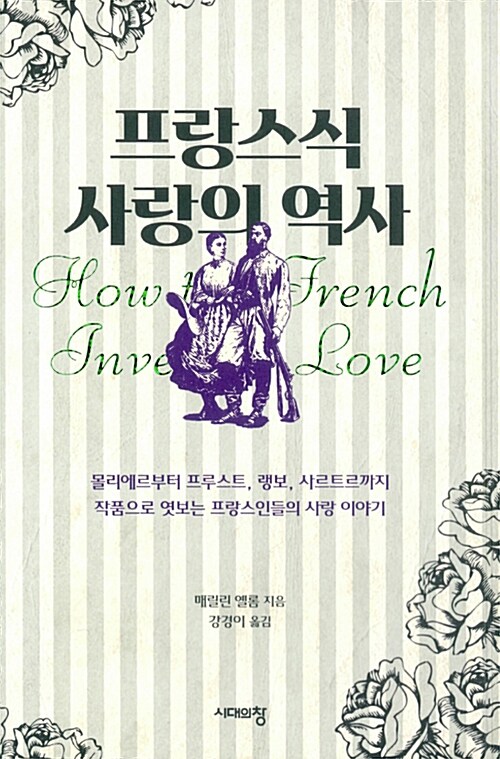



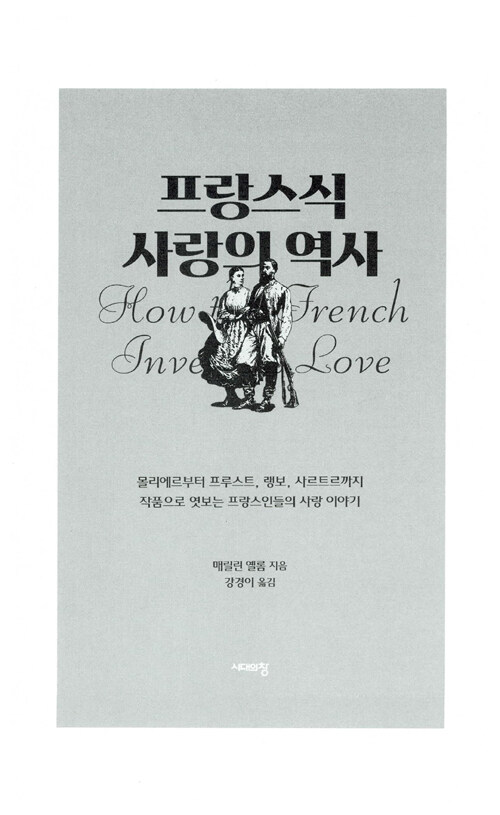
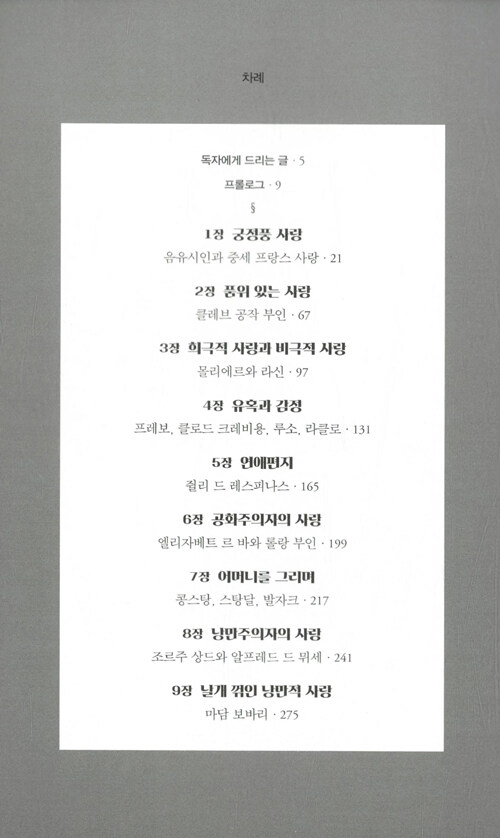
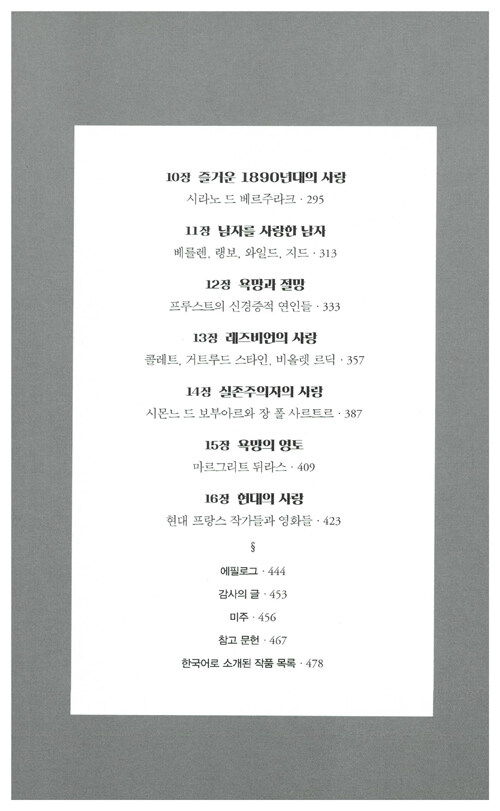



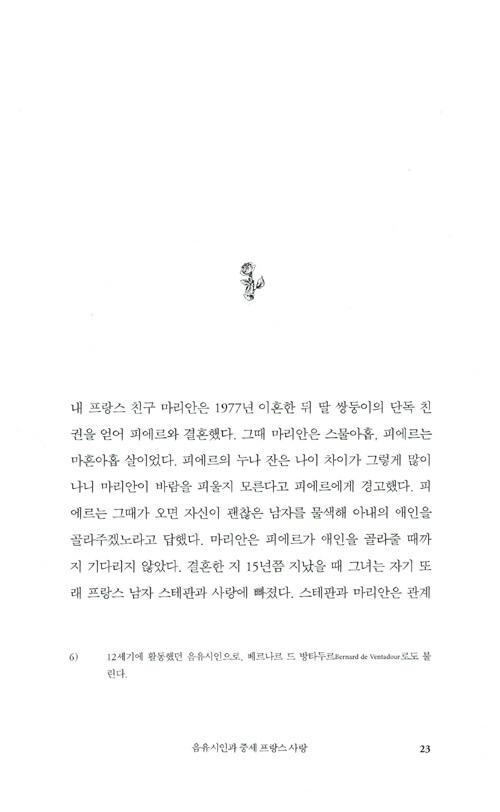

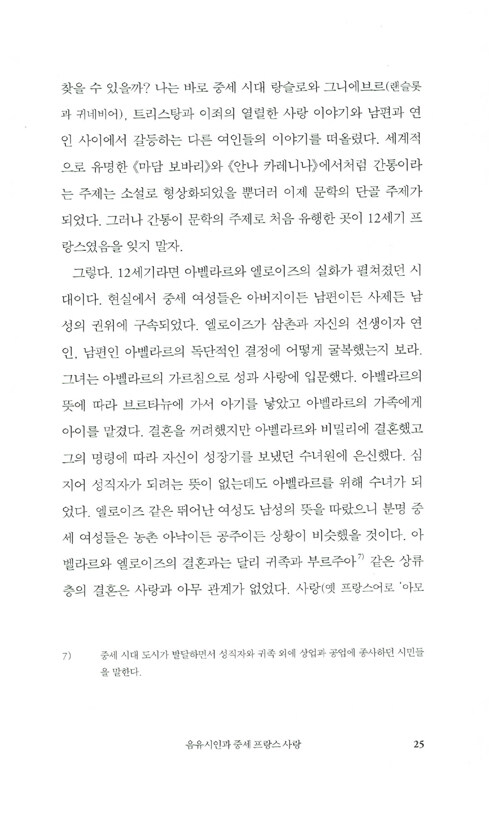



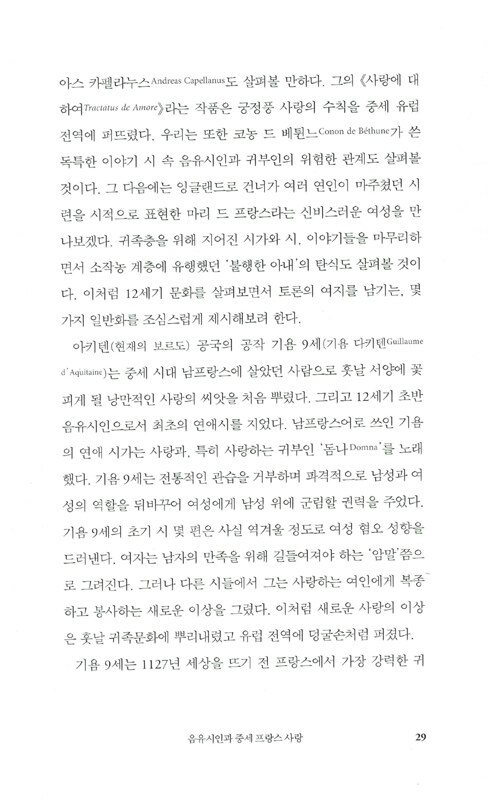

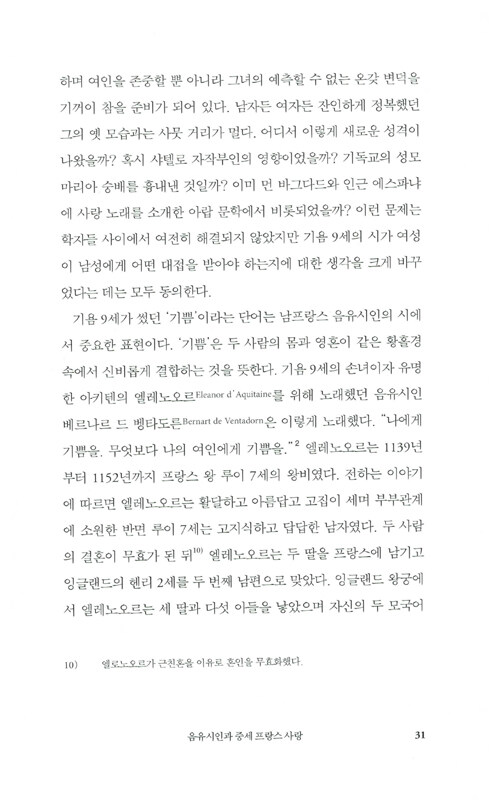
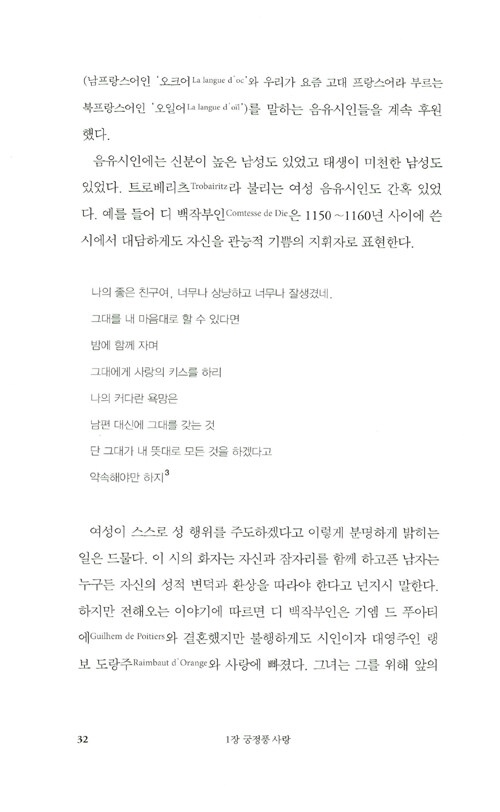
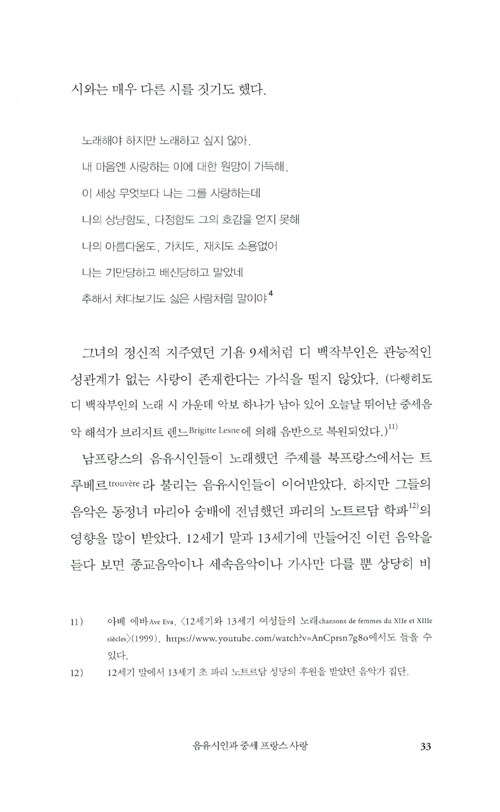

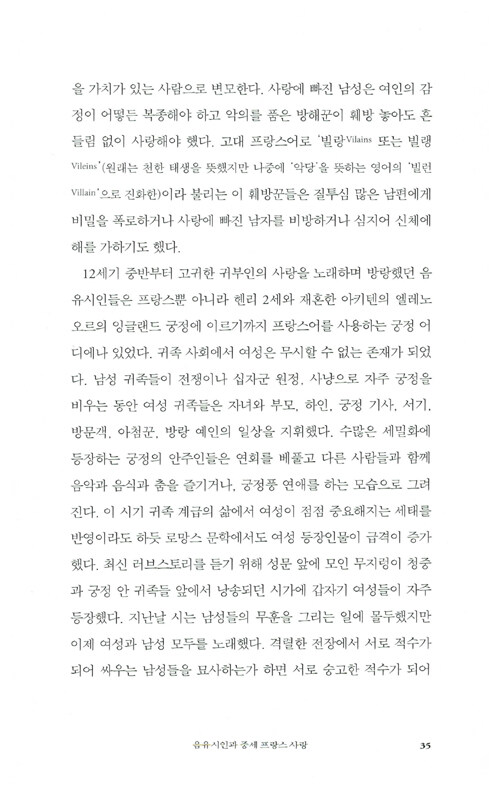

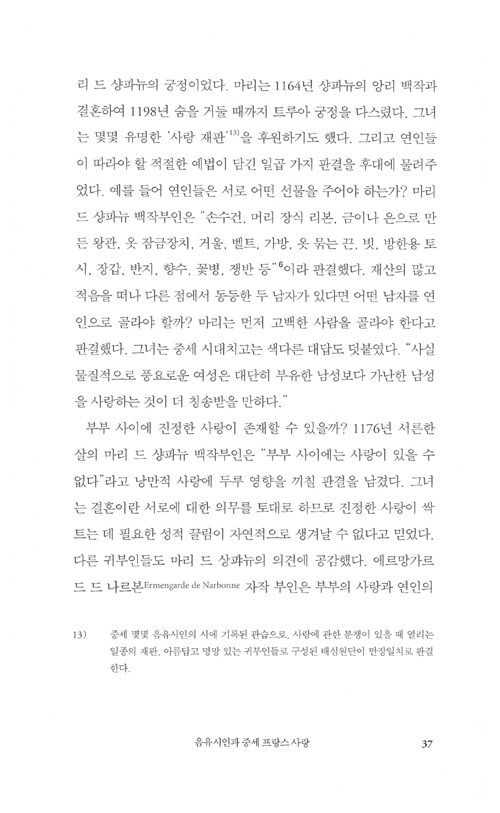


 미리보기
미리보기 10.0 100자평(0)리뷰(1)
10.0 100자평(0)리뷰(1)






































